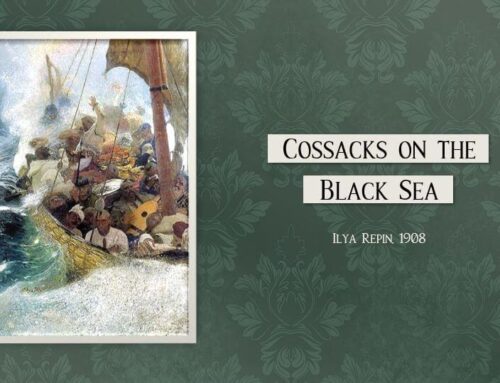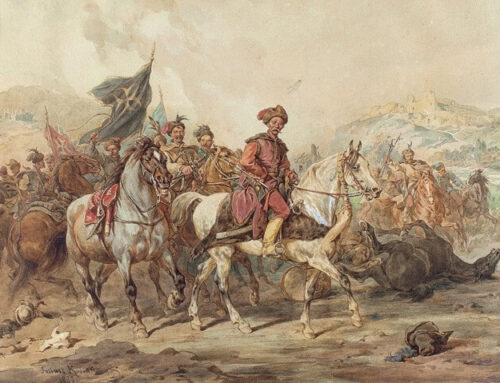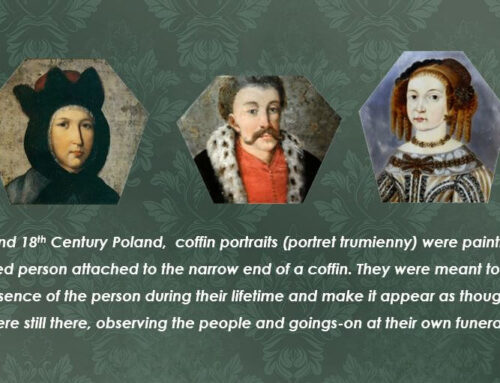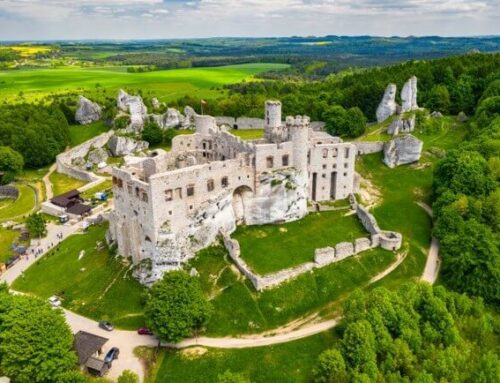An archeological discovery in Poland captured all my attention recently. A man was using a metal detector in Mikułowice (approximately 60 miles northeast of Kraków) when he uncovered battle armor dating from the 17th century that included a helmet, a pauldron (shoulder armor), what sounds like a gorget (neck armor), and various other pieces. Archeologists believe the 400-year-old artifacts, which are understandably corroded, belonged to a Polish hussar.
Of course, my imagination ran rampant when I read the article. Did a hussar fall in battle in that location? Was it possible he shed his armor, and it was forgotten for centuries? Did someone abscond with it and bury it there?
From what I know of Polish winged hussars, I find it difficult to believe a fallen soldier’s body would have been left behind, especially on home soil. I also have a hard time imagining he would have abandoned his gear. Not only was the armor expensive, it set that warrior apart from the others on a battlefield. That, along with his weapons and regalia, were his identity, and he took great pride in it.
For those not familiar with the Polish winged hussars, here is a brief summary: They were an elite group of armored cavalrymen from the “szlachta,” or noble class (a version of the age-old knights in shining armor). They were used as shock troops to break enemy lines by charging at said lines at high speed, bearing hollow lances known as kopie (kopia in the singular) with a length somewhere between sixteen and twenty feet.
These men were a jaw-dropping fighting force whose success would impact warfare for over a century. Also known as husaria, towarzysze husarska, heavy hussars, heavy lancers, and winged lancers, they were exceptionally trained, highly skilled troops—the Polish Renaissance version of the U.S. Navy S.E.A.L.s—and they were formidable.
The hussars were a complex amalgam of eastern and western influences that evolved into a true force under King Stefan Batory, who was elected in 1576. Polish armies had been based on western Europe’s medieval knight—complete with cumbersome armor and heavy lance—but they transformed by borrowing from Byzantine, Russian, and Mongol traditions and coalesced into one consistent “heavy” cavalry. At a time when other militaries turned away from armor, the hussars embraced it, though their kits weighed about thirty pounds, unlike their predecessors who sported a hundred pounds worth of plate.
So what did these kits consist of? Starting at the top, they wore helmets that might be of the “lobster tail” variety (known as szuszak or zischägge), often adorned with feathers and gems. Hussars favored heart patterns, and many of these helmets, like the one featured above, had ear guards with cutouts in the shapes of hearts or featured brass embellishments of the same shape. Nose guards attached to the helmets were sometimes also fashioned in a heart shape.
Next came a gorget to protect the neck and pauldrons for shoulders and upper arms. The gorget often featured a knight’s cross, as depicted in the picture to the left. Next were back and breast plates to protect the torso, and like the pauldrons, were made up on the bottom of “lames,” metal sections trimmed in brass or gold rivets, rosettes, or scrollwork that could be added, depending upon the man’s height. The hero of the Winged Warrior Series, Jacek Dąbrowski, was unusually tall at 6’2” and would definitely have sported more lames than his counterparts.
Breast plates, like the one in the picture above, were often decorated with brass medallions. The most common were a knight’s cross and an image of the Madonna, as seen in the same picture. The backplates were plain, though they might hold brackets where the hussar’s famous wings could be attached. Finally came the vambraces—arm iron or gauntlets—to protect wrists and forearms from enemies’ blades. The pieces matched, were well-crafted, and constituted a complete set.
Leg armor was typically not worn by the late-16th century and 17th century hussars. Instead, they wore padded żupans, usually in brilliant red. Because the dyes were costly, the color broadcast that the wearer came from wealth. Other accoutrements included heavy leather gloves and buttery leather boots in yellow or red—the colors again signifying status.
Often topping off the ensemble was an animal skin worn like a cape. The more exotic, the better. Leopards and tiger skins, lined in red silk, were typical. One might see wolf or bear or even a kilim (a sort of blanket), though these were considered more common. One wonders if the hides were simply for show and intimidation, or did they serve the additional purpose of giving the wearer an additional layer of protection? Perhaps a little of both.
The visual impact of a wall of armored cavalrymen clad in their flamboyant raiment, animal pelts flapping, riding full out with leveled lances, must have been both terrifying and stunning. If only I could get that time machine working, I’d perch up on a hill safely away from the action and watch the charge!
(Pictures of the armor were taken by myself at the Polish Army Museum in Warsaw)









Leave A Comment